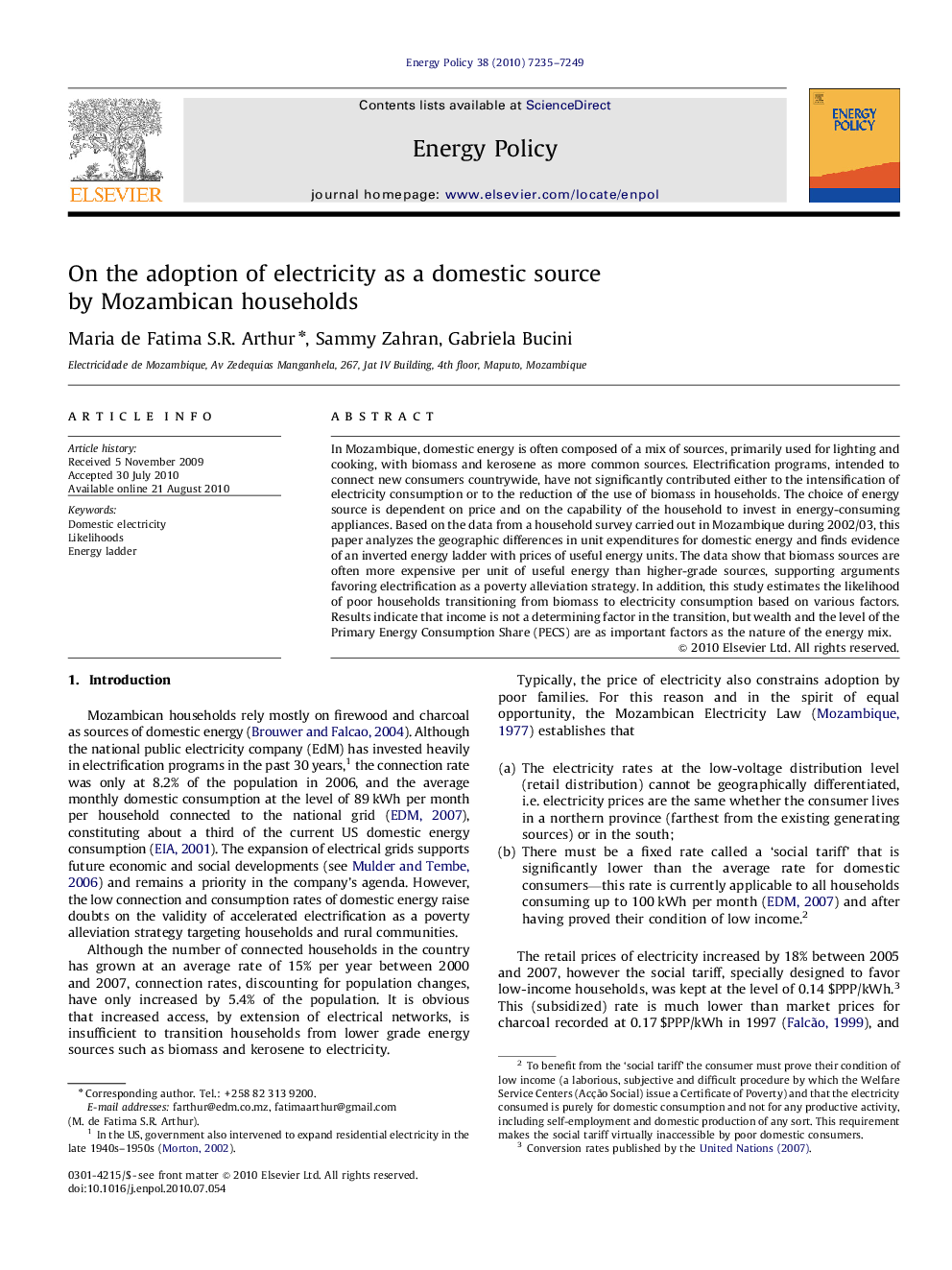| Article ID | Journal | Published Year | Pages | File Type |
|---|---|---|---|---|
| 996301 | Energy Policy | 2010 | 15 Pages |
In Mozambique, domestic energy is often composed of a mix of sources, primarily used for lighting and cooking, with biomass and kerosene as more common sources. Electrification programs, intended to connect new consumers countrywide, have not significantly contributed either to the intensification of electricity consumption or to the reduction of the use of biomass in households. The choice of energy source is dependent on price and on the capability of the household to invest in energy-consuming appliances. Based on the data from a household survey carried out in Mozambique during 2002/03, this paper analyzes the geographic differences in unit expenditures for domestic energy and finds evidence of an inverted energy ladder with prices of useful energy units. The data show that biomass sources are often more expensive per unit of useful energy than higher-grade sources, supporting arguments favoring electrification as a poverty alleviation strategy. In addition, this study estimates the likelihood of poor households transitioning from biomass to electricity consumption based on various factors. Results indicate that income is not a determining factor in the transition, but wealth and the level of the Primary Energy Consumption Share (PECS) are as important factors as the nature of the energy mix.
